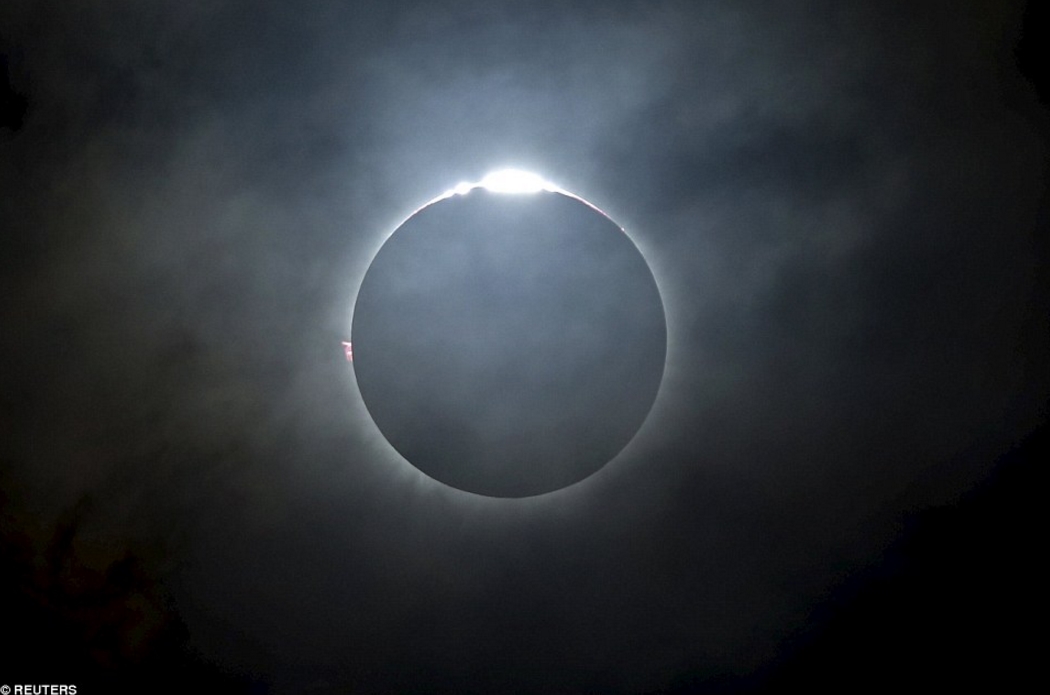
On January 31, the second full moon of the month will be visible. This will be the first of two "blue" moons that can be seen this year. However, the first Blue Moon will happen at the same time as a total lunar eclipse, and this will result in a natural phenomenon called the "Blood Moon."
The night before the Blood Moon, the moon will be at "its closest point to Earth." This will be the super moon's second arrival in 2018. Per Space.com, the total lunar eclipse on the 31st of this month is "the first time an event of this kind" to coincide with the Blue Moon after more than 150 years.
The event will occur on either January 31 at night or on February 1, but the exact date will depend on where you will be watching what many are calling a "Super Blue Blood-Moon."
During a Blue Moon, the moon doesn't really turn blue. The name is derived from the fact that this is the second full moon that is visible in a certain month. But on the 31st of January, sky gazers can finally lay their eyes on a moon with a different color. But we still won't be seeing a Blue Moon. (Related: Blood Moon eclipses have many concerned about End Times prophecy; is there any truth to it?)
In a lunar eclipse, Earth lines up between the sun and the moon. This blocks the light that hits the lunar surface, casting an Earth shadow over the moon. This shadow then appears as either "blood red or orange during totality."
Mark your calendars: on January 31, the Super Blue Blood-Moon will be visible in the middle of the night, or when the Pacific Ocean faces the moon. According to the National Aeronautics and Space Administration (NASA), those in "the western U.S., Alaska, Hawaii and British Columbia" can view the lunar eclipse from start to end. Even those in "central and eastern Asia, Indonesia, New Zealand, and most of Australia" can also view the event in full.
The night before the "Blue Blood-Moon," a supermoon will be visible. This means the moon will only be 223,068 miles (m) (358,994 kilometers [km]) away from Earth.
On January 1 this year, sky gazers from around the world welcomed the New Year with a breath-taking "wolf moon" supermoon. On March 31, we can look forward to another Blue Moon.
Tips for viewing a lunar eclipse
While a lunar eclipse is safer to view than a solar eclipse, it doesn't mean you can't be too careful during the event. Follow the tips below so you can safely view the upcoming Super Blue Blood-Moon.
- A lunar eclipse is visible from "over half the world" and if you're lucky, you'll be in the half with the clear view. If the event happens at night or just after sunset, the Moon will rise in the east. If the lunar eclipse takes place right before dawn, the moon will set in the west. If the event takes place in the middle of the night, you can easily view the eclipse.
- Pick a location with "a lower chance of clouds" so your view is unobstructed.
- When possible, go to the country. With minimized light pollution and smog, your view of the lunar eclipse will be even clearer.
- You won't need special equipment when viewing a lunar eclipse. But don't forget to bring warm clothing and something to drink, like coffee or tea.
- A pair of binoculars can help you enjoy your view of the lunar eclipse.
You can learn more about other fascinating scientific phenomena at WeirdScienceNews.com.
Sources include:
Please contact us for more information.























